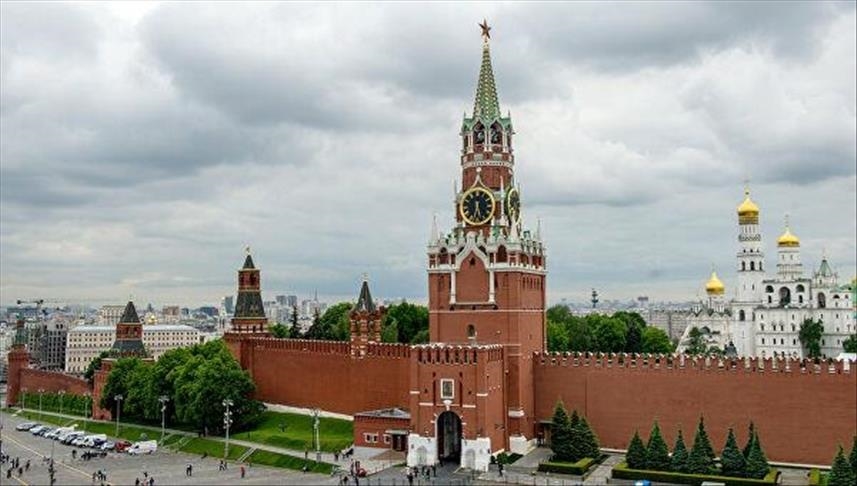A limited truce as a strategy: Kremlin tries to avoid new US sanctions
6 August 16:55
The Kremlin is considering offering Donald Trump certain concessions, including a limited air ceasefire with Ukraine. Such a move could serve as a signal of de-escalation and potentially help avoid new US sanctions.
This was reported by Bloomberg. The publication cites anonymous sources familiar with the situation.
According to the sources, the visit of US Special Representative Steve Witkoff to Russia is seen as a belated, but still an opportunity for the Kremlin to reach an agreement with Trump. At the same time, expectations of a breakthrough remain low.
Among the possible initiatives is a temporary suspension of drone and missile strikes. But such a proposal will be considered only if Ukraine also agrees to it, one of the sources emphasized.
Nevertheless, Russian President Vladimir Putin does not plan to agree to a complete cessation of hostilities, as the Russian army continues its offensive and Moscow’s strategic military goals remain unchanged.
Three scenarios from a political scientist: what to expect from Putin in response to Trump’s ultimatum
The Kremlin seems to be at a crossroads: will Putin make concessions to Donald Trump to avoid new sanctions? In an exclusive commentary for "Komersant Ukrainian", political analyst Volodymyr Fesenko explained possible scenarios and Russia’s position in the face of the August 8 deadline for Trump’s ultimatum.
According to Fesenko, the visit of US Special Representative Steve Witkoff to Russia this week is more symbolic:
“I don’t expect a miracle from this meeting, but for me it is important in terms of how Putin will respond to Trump. How critical it is for him to keep a window of opportunity for negotiations with Trump in the future,” the political analyst emphasized.
Although a complete cessation of the war is unlikely in the near future, the expert sees three main scenarios.
Idealistic scenario: partial air ceasefire
This option, according to Fesenko, looks like a compromise – Russia could agree to stop missile and drone strikes, provided that Ukraine also supports this initiative.
“Formally, it looks like a compromise, but in fact, it is Putin’s concession to Trump. And therefore, it looks like his weakness. That is why, in my opinion, this is the least likely option, although it is theoretically possible,” the expert explains.
In the event of such a partial truce, Trump could use it as an argument in his election campaign: “I stopped the fighting at least in the air.” In this case, Russia will avoid new large-scale sanctions, although secondary sanctions may appear, for example, against India.
Realistic scenario: start of negotiations on a phased ceasefire
This scenario does not involve an immediate cessation of hostilities, but an agreement to start a dialogue on a gradual reduction in escalation:
“Russia says: okay, we are ready to discuss ceasefire proposals – as we did in March. This is a formal compromise in which Putin saves face,” Fesenko says.
In practice, this could mean an air ceasefire as the first step, followed by a ground ceasefire, and only then potential peace agreements.
“If negotiations on a phased ceasefire begin, it will be a big step forward and a way out of the impasse,” the expert emphasizes.
The scenario is tough: no concessions and new sanctions
If Putin completely ignores Trump’s ultimatum, the United States may take much tougher action.
“Putin can say: I have my own ultimatums, too, and he will not make any concessions. In this case, according to the Western media, an angry Trump may announce large-scale sanctions,” the political analyst notes.
However, Trump is skeptical of sanctions as a tool. He has more faith in duties:
“For Trump, duties are a kind of universal weapon. He considers them effective in both the economy and politics. And here, targeted actions are possible,” Fesenko adds.
Who can be hit?
These countries could be targeted for secondary sanctions or increased duties:
“India is a weak link. It is more dependent on trade with the US than vice versa. Brazil is another potential target of pressure, as a trade and political war has already begun between Washington and Brazil,” explains Fesenko.
The situation with China is more complicated. There is a 90-day moratorium on new tariffs, and neither side is interested in a trade war.
“China can respond painfully, for example, by stopping the supply of rare earth metals. This is a serious threat to the United States,” the expert emphasizes.
What sanctions against Russia are still possible?
- Targeted sanctions against the Russian tanker fleet
- Duties on Russian goods (currently the US has zero rates)
- Sanctions against companies supplying Russia with dual-use goods
“Even Trump was surprised to learn that the US still buys Russian uranium and fertilizers. This shows that he does not delve into the details, but he can make tough decisions under pressure,” Fesenko said.
The political analyst predicts that if pressure on Russia increases, the United States will also step up its support for Ukraine:
“Most likely, there will be additional arms packages for Ukraine. For money, not for free, but it is both support and an additional tool to put pressure on the Kremlin,” the expert concludes.
Thus, the situation remains unstable, and the Kremlin’s reaction to the August 8 deadline will determine not only the course of events in Ukraine, but also the scope of American actions in the field of foreign policy. Expectations are restrained, but the potential for change exists.









